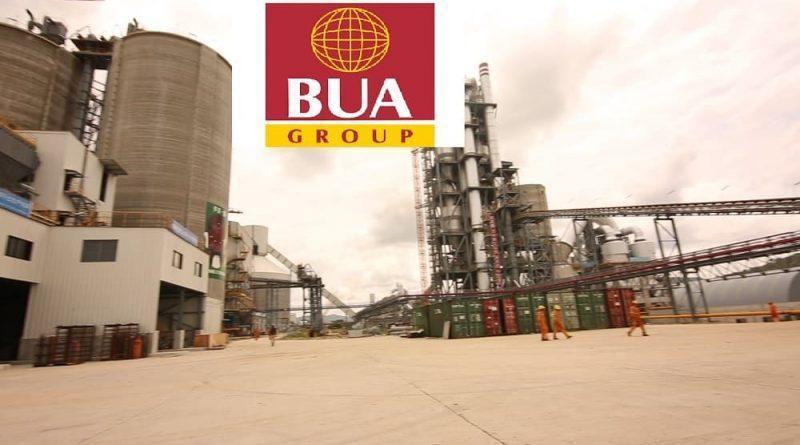BUA Cement Q3 22 Results: High OPEX and finance costs erode earnings
| Stock Rating: SELL Price Target: N44.60 Price (28-Oct–2022): N70.00 Potential Upside / Downside: -36.28% Tickers: BUACEMEN.NL / BUACEMENT.LG |
| BUA Cement (BUACEMENT) released its 9M 22 unaudited results after trading hours last week Thursday (27 October). The company reported an EPS decline of 43.3% y/y in Q3 22, however 9M 22 EPS grew by 12.3% y/y. Elevated production and operating costs, as well as increased finance expenses, continue to weigh on earnings. As a result, when annualised, the achieved EPS is 47.09% below our forecasts and 56.90% below consensus forecasts for FY 22. The market’s reaction to the results has been neutral. Year-to-date, the stock is up 4.4%.Price growth drives double-digit revenue growthThe company’s revenue grew by 18.2% y/y in Q3 22 (9M 22: 40.5% y/y). When annualised, the achieved revenue is below our FY 22 forecasts (-17.35% variance). Nevertheless, we note that BUA Cement delivered the most revenue growth y/y amongst its peers in Nigeria in Q3 22. At the time of writing, management was yet to provide details of the drivers of the company’s strong revenue growth, nonetheless, we believe this to be driven by strong growth in price per tonne (likely in excess of 17% y/y), while we expect slow sales volume growth. This is owing to the torrential rainfall and the consequent flooding across the country that characterised the most of the quarter. In addition, high inflation continued to tighten customer wallets. So far, the firm Is yet to take full advantage of the additional 3.0MMT Kalambaina line 4 plant commissioned in January 2022. Nonetheless, we expect the firm to ramp up its output towards the end of the year as building projects are rounded off. Distribution costs erode EBITDA marginThe Gross margin shrank by 773bps to 38.8% in Q3 22, a seven-quarter low, owing to significant Cost of sales growth (+35.3% y/y). Cost of Sales continued to be pressured mainly by the surge in Materials (+43.19% y/y), Energy Cost (+60.08% y/y) and Other Production Expenses (+186.21% y/y), which reflects the worsening FX situation as it relates to imported inputs, and the sustained hike in energy costs. EBITDA declined by 5.3% y/y in Q3 22, following a 78.9% y/y jump in Operating expenses. Selling and Distribution costs more than doubled, up 125.17%. The distribution cost component (accounting for 67% of total Selling & Distribution costs) surged by 200.89% as the sustained high price of diesel in Nigeria remained a major headwind. In addition, Marketing expenses & other overheads rose by 70.81%, contributing to overall EBITDA erosion. Consequently, the EBITDA margin shrank 922bps to 37.1%. While the company tries to mitigate the impact of rising energy costs by consuming locally-sourced Liquefied Natural Gas (LNG) to diversify its energy mix and reduce its reliance on imported Coal, Low Pour Fuel Oil (LPFO) and AGO, it would appear there are sustained disruptions in its LNG supply. This has forced the company to remain reliant on diesel and imported coal for production and distribution. Nonetheless, recall that the company signed an agreement with Wartsila OY of Finland to construct a 70-megawatts dual-fuel power plant for its Obu Line 3 project in Edo State and a 48-megawatt power plant for Sokoto Cement Line 3 in its effort to complement its capacity expansion with efficient power supply and improved energy utilisation. We expect that as the company transitions to gas powered plants, its energy bill will be lowered in the long term. However, in the short term, these costs are likely to persist as the company remains reliant on existing fuel sources for energy and on diesel for its distribution trucks. Reversal in bond capitalisation, foreign exchange losses pressure earnings The company recorded Net finance costs of N6.88bn in Q3 22 from N225.05m in Q3 21, following its policy to discontinue capitalisation of bond and loan interest on its Sokoto line 4 plant. In addition, it incurred significant foreign exchange losses. As a result, Profits Before Tax declined by 41.4% y/y. Despite the decline in tax expense in Q3 22 (-40.2% y/y), Net Income fell by 43.8% y/y. ConclusionBUA Cement’s revenue performance in 9M 22 was below our expectations (-17.35% variance) when annualised. Its slow volume growth remains a concern in the light of capacity utilisation. When annualised, its achieved output is below our FY 2022 forecast by 15%, bringing its utilisation to 49.46% (4-year historical average: 61.7%). In addition, the elevated operating expense profile is worrisome. In the short-run, given the disruptions in LNG supply, we expect the company to continue to rely on diesel and coal for its production and distribution activities and this is likely to further pressure its bottom line. We also expect net finance costs to rise going forward as the company begins to unwind earlier capitalised borrowing costs as plants become operational, while FX Iliquidity remains a major headwind. Overall, we maintain our SELL recommendation on the stock. On our estimates, the stock is trading on 2022F P/E and EV/EBITDA multiples of 20.0x and 14.3x, premiums to emerging market peer multiples of 15.7x and 8.6x respectively. SOURCE: Coronation Asset Management |




